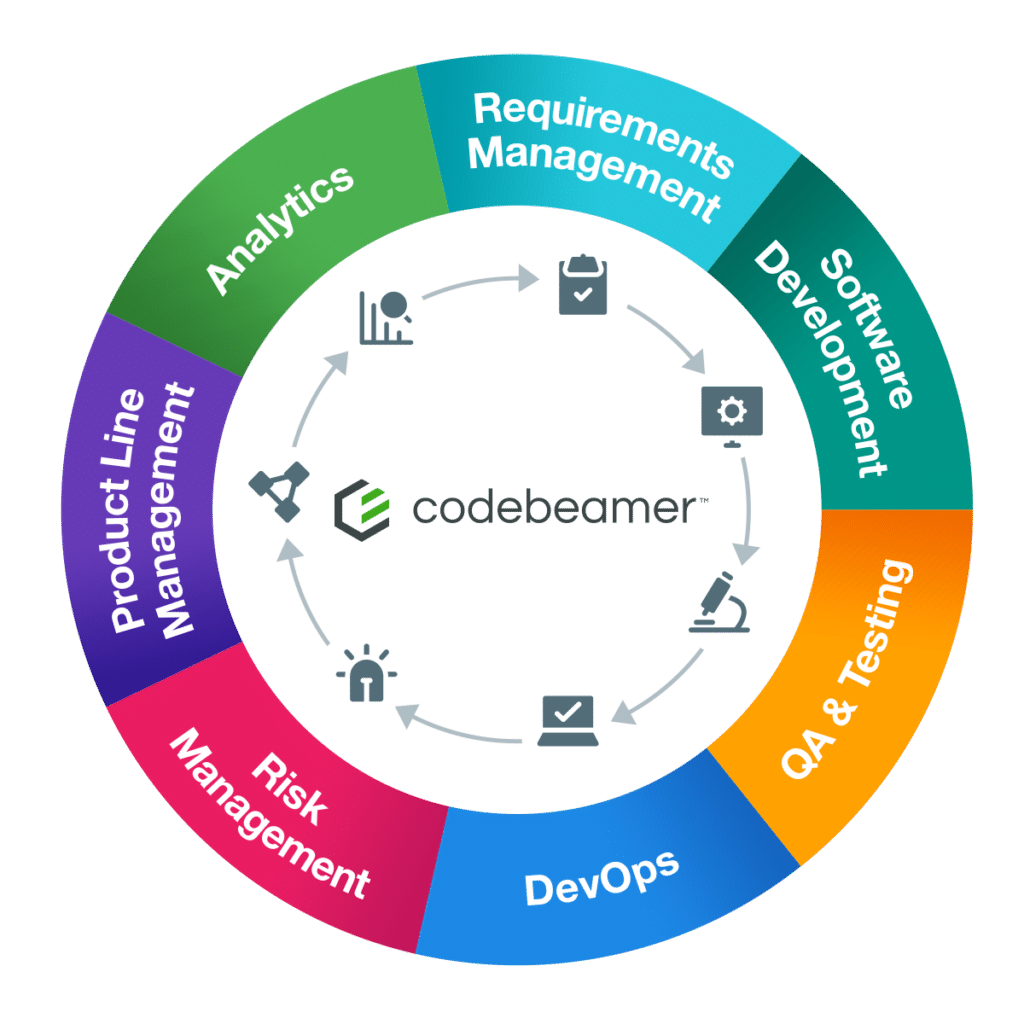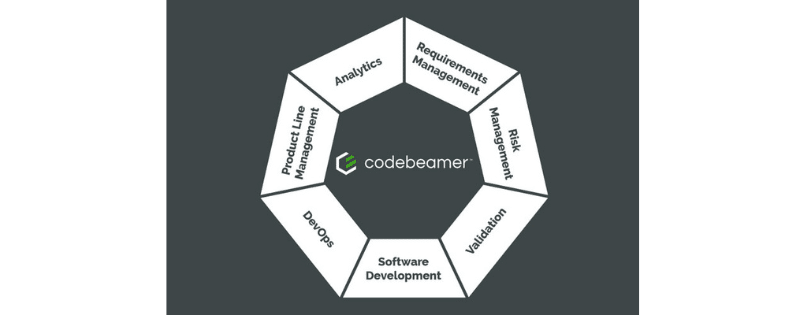As the lines between product and software development become less obvious, the need for requirements management becomes clear. However, the right solution isn’t always easy to identify. IBM® Rational® DOORS® has long been a handy tool for managing requirements used by enterprise software developers worldwide. But times have changed, and a digitalized, IoT-connected world presents new challenges that DOORS hasn’t been designed to handle. Trying to keep pace with a fast-evolving tech environment, IBM released DOORS Next Generation (DOORS NG) in 2012. IBM targeted embedded software developers wanting to go Agile and aiming to work on their requirements in a collaborative environment. However, user experiences show that Next Generation hasn’t been able to live up to user expectations and satisfy its users’ increasingly complex needs. Product and software developers still relying on legacy software toolchains based on DOORS or DOORS NG are feeling increasing pressure from competitors that are able to adopt more mature, modern requirements management and software development practices.
Modern Application Lifecycle Management (ALM) solutions were developed with these challenges in mind. Holistically integrated solutions such as PTC®’s Codebeamer were developed from the ground up to organically integrate at the database level, relying on a single central repository to store and manage all lifecycle data. As Codebeamer offers a range of functions within that central database for various user groups and processes, it covers the entire application development lifecycle. Let’s examine some of the functionality of Codebeamer and DOORS head-to-head.
Capabilities Covering the Entire Lifecycle
While both DOORS and NG were developed for requirements management only, integrated ALM tools offer functionality that spans the entire process of development. The requirements management features of next generation ALM tools match or even exceed the capabilities of DOORS, but Codebeamer also lets you manage the process of development, testing, release, and maintenance – all in one platform that provides access to all team members throughout the lifecycle. This creates a single source of truth across the entire process of development, and hugely facilitates monitoring, documentation, and reporting.

End-to-End Traceability Across the Development Process
Codebeamer relies on a single central database, meaning there is no need to integrate separate tools or modules which would disrupt traceability. Tasks derive from requirements with links automatically established between them. Source code associates with tasks and requirements, and test cases generate from these artifacts so that traceability exists from requirements all the way through to testing and release. Simple reporting options confidently show this traceability along the lifecycle, also reducing the burden (and costs) of preparing for compliance audits in the case of safety-critical development.
Rational DOORS and DOORS NG lack integrated test management, hindering traceability from requirements all the way through to testing. This makes NG a less than ideal choice for developers of highly-regulated safety-critical products, where being able to show the chain of work items from end to end is key to compliance.
Integration
Having an open architecture greatly reduces the burden of integrating other tools with your ALM platform. Essentially, Codebeamer can exchange data with widely used software tools via a number of interfaces and file formats. Therefore, implementing next generation ALM need not be a disruptive process: key software applications can remain in use, while state of the art ALM functionality replaces outdated tools. Rational DOORS and DOORS NG lack an open architecture, making integrations more challenging. Most of the disadvantages of DOORS and NG stem from a lack of integrability.
Scalability
In addition to end-to-end traceability, the modern architecture of next generation ALM tools also positively affects scalability. They can handle large amounts of data with ease and optimal performance,
facilitating collaboration between several teams and departments. Multiple geographically dispersed teams and departments require access to millions of work items with optimal performance. Codebeamer’s architecture and collaboration features promote high performance in a scaled, global environment. Collaboration features include but are not limited to:
- automatic change control on all artifacts
- flexibly configurable e-mail notifications and approval workflows
- permission control and BPM process management
- activity monitoring
- Kanban boards for task management
Major performance differences exist between legacy and next generation tools. IBM DOORS needs 300 GB RAM cache to manage 2 million work items and their dependencies. Codebeamer needs just 32 GB at optimal speed and reliability, minimizing hardware needs and costs of scaling. Codebeamer’s specific collaborative features further support scaling by allowing hundreds or thousands of people to efficiently access and manage consistent data via a single shared repository. The old-fashioned UI of DOORS doesn’t exactly promote ease of use. Certain features are buried in a layered system of menus, preventing easy adoption when scaling teams.
Cost of Ownership
When calculating the Total Cost of Ownership (TCO) for any software tool, upfront licenses costs are just a fraction of the cost. In addition to the price of support and maintenance, a fractured toolchain consisting of standalone solutions also generates hidden costs. Integrating multiple standalone tools can be a costly, ongoing task due to frequent software updates. Holistic integration significantly reduces TCO for Codebeamer versus that of a mixed “tool zoo.”
Modernizing a Rational DOORS environment requires investment in DOORS NG, forcing increases in license purchasing and maintenance. IBM offers ReqIF as an integration tool for DOORS and NG, but ReqIF’s limited functionality hinders data consistency. ReqIF makes transferring items across DOORS modules in a traceable manner difficult, as relationships between work items are not transferred. Large numbers of requirements also causes problems.
Should You Consider Replacing Your DOORS or DOORS NG Environment?
Should you replace DOORS or DOORS NG with an integrated Application Lifecycle Management platform? The answer largely depends on your individual circumstances and processes. In general, it’s safe to say that more and more software development professionals consider DOORS obsolete as modern methodologies and development practices are gaining traction. While it might not be vital for you to make the transition now, modernizing your toolset and processes is unavoidable if your teams are still relying on outdated practices and software solutions. Switching to next-generation tools like Codebeamer sooner rather than later gives your company the competitive edge it needs in order to stay ahead of other players on the market.
Migration Costs and Return on Investment
Migrating data and processes across software tools is often a difficult, costly, and time consuming task, especially with the limitations of ReqIF. Before making an ALM purchase decision, factor in the costs of data migration to your chosen solution. With Codebeamer’s DOORS Bridge functionality, simply migrate millions of artifacts including baselines, discussions, history, and link attributes from DOORS to your new ALM platform. That’s more data than what IBM’s own solution is able to transfer from DOORS to NG!
Quantifying the benefits that a future-proof, modern ALM tool brings might be difficult, but these factors significantly impact the ROI of your software investment. When crunching the numbers, consider the beneficial effects of enhanced collaboration. End-to-end traceability and the ability to simply implement mature processes lead to shorter time to market and reduced development costs. Measure these against the price of licenses, maintenance, and the costs of rollout, process customization, and training your team.
Trust an Expert Guide for your Digital Transformation
PTC and 3 HTi are industry leaders in digital transformation for product-driven organizations. Regardless of your current processes or systems, we are here to evaluate and guide your path forward. Evaluating DOORS vs Codebeamer, or other enterprise ALM solutions? Contact us today to learn more about ALM solutions, or to schedule a complimentary discovery call to chart your digital transformation journey.


